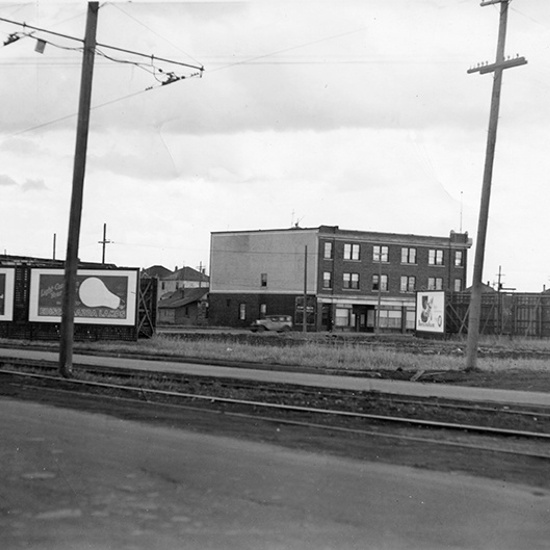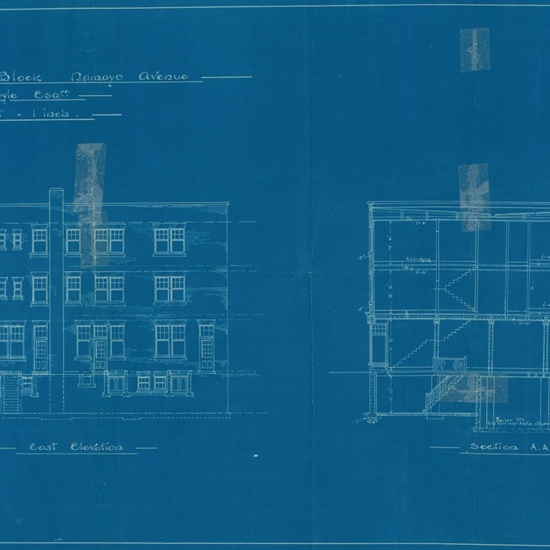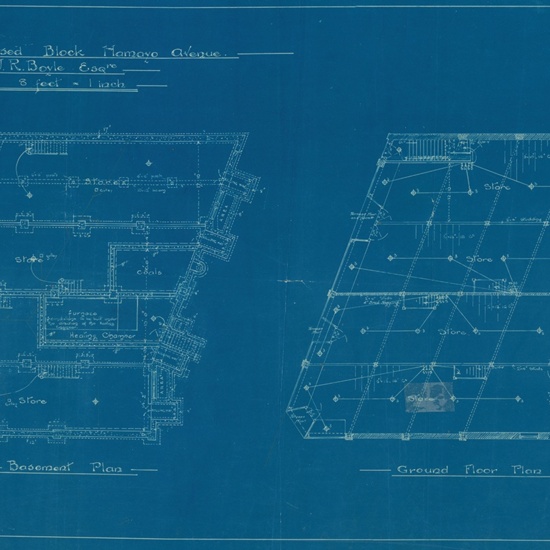Lambton Block
Built at the peak of the economic boom prior to the First World War, ths apartment block retains much of its original Edwardian character inside and out.
Built at the peak of the economic boom prior to the First World War, ths apartment block retains much of its original Edwardian character inside and out.
Ronald Lines designed the Lambton Block with six sides to accommodate the odd-shaped corner of what was Namayo Avenue and Thompson Avenue. The three-storey building originally had 22 apartments above and contained four stores at street level, all with separate access to the basement. Due to its proximity to the Royal Alexandra Hospital, the top floor became a nurses home for a few years in the 1920s. Following the Second World War the commercial space was converted for more apartments. The original brick pilasters on the ground floor frame the bricked in commercial spaces, now containing sash windows. The building’s signature corner façade features single sash windows, a top floor pediment and a stone name plaque. A sign band and cornice wrap around the principal façades on 97 Street and 110A Avenue. Pilaster columns frame the single sash windows of the building, with the north side containing four double sash windows on the top two floors between the pilaster columns. The building’s parapet sits above a metal cornice, with capped pilasters continuing slightly higher. All windows have stone sills and vertical brick lintels. The interior details harken to its first days: hardwood floor and trim, wood-spindled stairway and bannisters, transoms over suite entry doors, and four skylights. The block included some bachelor and one-bedroom suites, some apartments with fireplaces, and some with or without bathrooms. Each floor had a common ladies’ and gentlemen's bathroom. In 1980 the apartment was converted to law offices, but it eventually reverted back to a residential building.
John Robert Boyle paid $25,000 to have this building erected by the contractors Read-MacDonald-Brewster. Boyle named the block after Lambton County in Ontario from where he hailed. He went on to become a prominent lawyer, Supreme Court judge, and politician. Boyle Street in Edmonton and the town of Boyle Alberta were both named after him.
Details
Type
Residential
Designation Status
Municipal Historic Resource
Neighbourhood
Time Period
Year Built
1913
Architects
Architectural Styles
Character Defining Elements
Brick structure , Corner entrance , Cornice , Decorated parapet , Flag pole , Flat roof , Irregular footprint , Lintel , Pediment , Pilaster , Skylight , Three storeys or more




